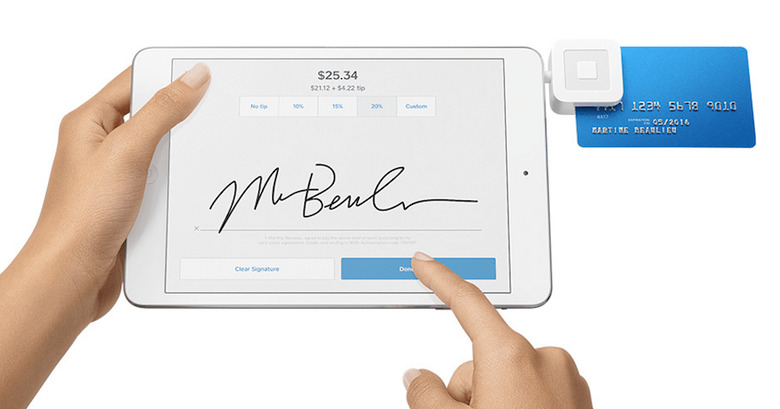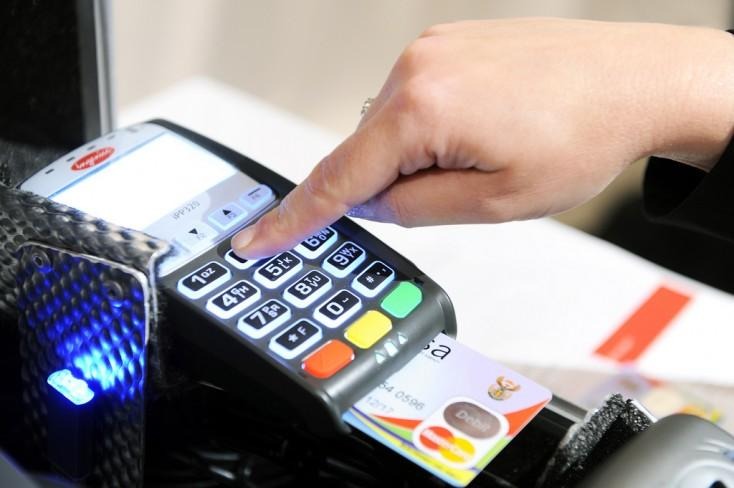Credit Card Signature Phase-Out: 5 Things To Know
Credit card signatures in the US are finally set to retire, with the card networks putting their foot down over chip-enabled payments. While credit cards with embedded security chips – also known as EMV cards – have become commonplace, the need to still sign a paper slip or a touchscreen was a hangover from the old days of magnetic strip swiping. Now, US retailers are finally getting up to speed with the new technology, though it may not be entirely smooth sailing. Here's what you need to know...
Many retailers were already ignoring signatures
Even if you had to sign when you last made a payment, the retailer might not have even checked it. Some of the big-name chains have already moved beyond signatures, or are about to: Walmart already was, and Target will get rid of them this month, it confirmed to the NY Times.
There's a big motivation beyond security, after all. Getting customers through the checkout process quicker makes the whole thing more efficient.
It'll vary by store, and by card
Even when this deadline passes, your experience won't necessarily be the same everywhere you shop. The card networks will generally allow stores to choose whether they demand a signature any more, expanding existing policies that have allowed merchants to turn the requirement off for relatively low-value transactions. Even then, the different card providers are running the process differently. If one step of the chain still demands a signature, you'll still be signing.
Mastercard's change will impact payments in the US and Canada, as will Visa's – but only if the payment terminal has chip support. Discovery adds Mexico and the Caribbean to that list. American Express is going the whole hog, and making the change worldwide. Smaller providers, like Square, however, won't be switching immediately, however.

You have credit card chips to thank
Although embedded chips in credit and debit cards have been commonplace in Europe and elsewhere for many years, they only began appearing on US payment cards around three years ago. In doing so they supplanted the magnetic strip, creating a one-time code that authenticates the payment. Even that promise of avoiding fraudulent transactions, however, required some pressure from the card networks in order to get merchants to upgrade.
Those networks set a deadline of October 1, 2015 for card-present fraud, making the link in the payment chain that was least compliant with chip card best-practice liable for a fraudulent transaction. If a bank provided its customers with chip cards, but a store only processes old-fashioned swipes, then it'll be the retailer that's liable if a cloned card is used. Unfortunately, even with that deadline kick-starting things, the transition to chips isn't complete. Many retailers still don't have payment terminals that'll accept them, usually because their payment provider isn't fully ready yet.
Chip, but no PIN
While the US implementation of chip payment cards may have included the one-time code system, just like the European implementation, there's a big way in which it differs. In Europe, chips came hand in hand with PIN codes: signatures were deprecated for both credit and debit card purchases. Instead, you slot in your payment card and punch in a four-digit PIN to authorize the transaction.

In the US, however, only the chip part was adopted. Debit card purchases usually rely on a PIN, just as if you were using the card to withdraw cash from an ATM, but credit card purchases, even when authenticated with a chip rather than a swipe, expect you to sign on the screen. That's despite the signature itself generally being ignored in the overall transaction, since it's the one-time code generated by the chip that's being relied upon.
Travelers beware
That absence of a PIN code has security implications for using a credit card in the US, of course, but also when it comes to traveling. Since the European systems expect a PIN, even if your US-issued card has a chip it may still encounter problems with foreign card machines. In a best-case scenario, the machine prompts for a signature instead – usually on a hastily printed form – but sometimes it can't get past demanding a PIN the customer simply doesn't have.
If you're traveling and want to avoid the hassle, it's worth contacting your bank or card provider in advance and requesting a PIN. Most will generate one and send it out – make sure to leave enough time between making the request and actually traveling, of course. Even then, the system sometimes can stumble, particularly if the payment terminal you're using isn't set up for real-time communications with the payment network, aka "offline transactions," which US cards expect.
